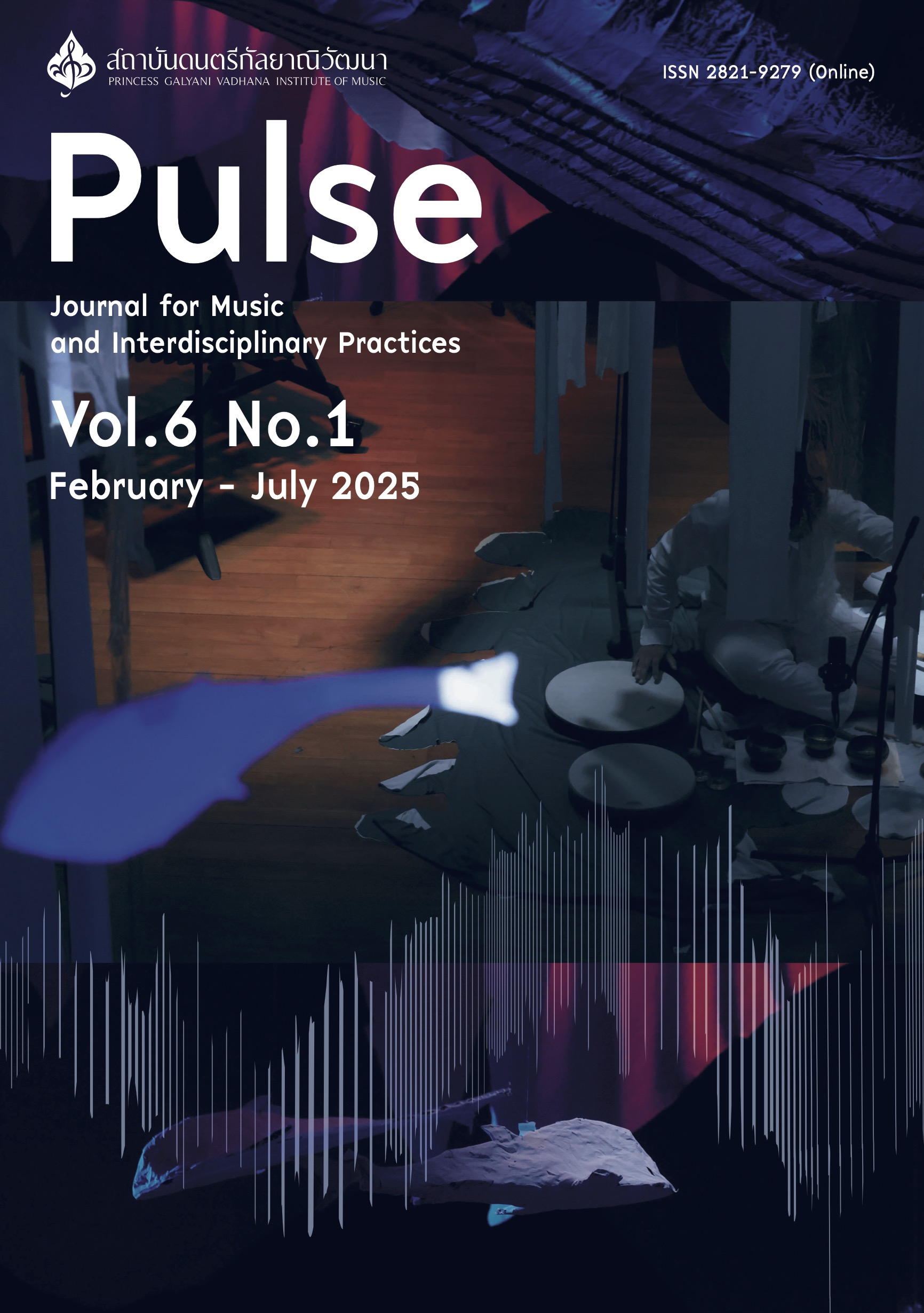TULTUGAN CONTEXTUALIZING MUSIC EDUCATION THROUGH THE ARTISAN’S PERFORMANCE-TEACHING PROCESS
Main Article Content
บทคัดย่อ
The Philippine k-12 music education curriculum promotes engaging music classes through output-based learning. Such a learning approach aims to develop learners who are expressive, creative, and culturally aware individuals. However, there is limited information or knowledge on how to address the learning demands of the learners based on the mandate of the Philippine education system. Also, there is a lack of information on the cultures of different regions in the country. Furthermore, educators don’t have enough learning resources and knowledge to deliver quality music education to learners. With that, there is a need to document and study different cultures in the country, specifically in the province of Iloilo, to establish the plurality and dynamism of cultures in the Philippines. Likewise, studying cultures in the country would inform members of the community and other outsiders about the knowledge, expression, approaches, and practices organic to a specific community. This paper is anchored to Symbolic Interactionism with the aim to answer the question of how Tultugan practice is transmitted from one generation to another and find its music education possibilities. Furthermore, to look at the music education possibility of Tultugan, the paper used the TCTF framework by Schippers which can enlighten music educators on how to navigate in designing music classes using local music materials. The study interviewed an artisan or culture bearer in the community. Data gathered are from the interview, pictures, and observations. Data were then triangulated and member-checked to ensure the reliability and validity of the study. Results show that the transmission processes in learning Tultugan have a lot of potential for music education that promotes socio-cultural awareness among learners while developing their expressive and performance competence.
Article Details

อนุญาตภายใต้เงื่อนไข Creative Commons Attribution-NonCommercial-NoDerivatives 4.0 International License.


